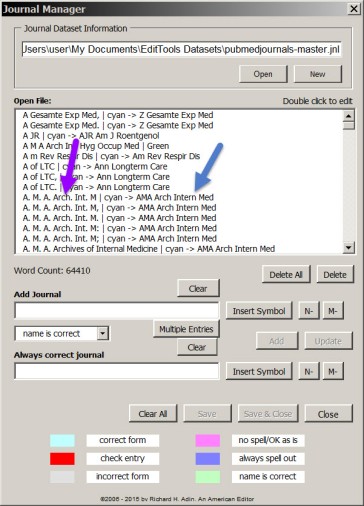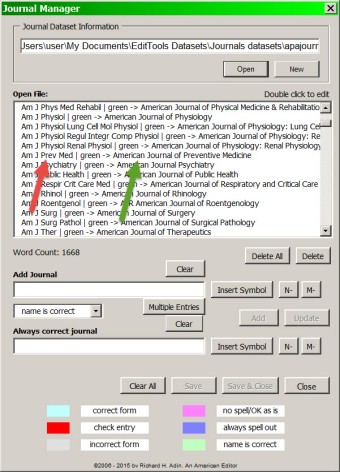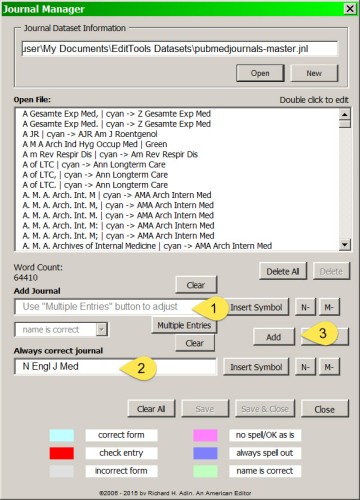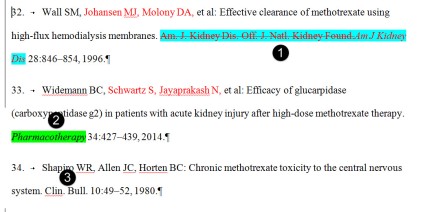Carolyn Haley
Dialogue is a big area of editorial focus in fiction. It presents multiple technical issues — making sure all open quotes are paired with close quotes; punctuation is inside or outside the quote marks as appropriate; terminal punctuation is there at all; quote marks are right-side-up and/or have no spaces around them, and are “curly” (typographer style) versus straight.
It also presents issues regarding who said what and how, and whether that information is needed. The primary content elements are identifier tags (the who part) and writing style (the how part). Two simple examples: “Let’s sneak up the back stairs,” he said quietly, versus, “Let’s sneak up the back stairs,” he whispered; and “Ready, aim, fire,” he shouted loudly, versus just, “Ready, aim — fire!”
My house style regarding dialogue is to emulate what I see in the hundreds of traditionally published books I read and review annually. The accepted wisdom is to minimize tag use (e.g., he said), use an appropriate tag when needed (e.g., he whispered), and/or bracket the words with an action so the reader can follow the exchange (e.g., The general stood behind the troops and counted down with his arm. “Ready, aim — fire!”).
Dashes and Ellipses
Em dashes (—) and ellipses (…)occur often in novels to signify broken or interrupted speech or thoughts (em dash), or hesitant or trailing-off speech or thoughts (ellipses). Regardless of purpose, they have to be handled consistently in a manuscript. They are handled differently in manuscripts destined for electronic versus print production, which adds a formatting element to the editor’s equation.
My default practice is to edit for print production. More and more, though, my clients intend from the get-go to self-publish in e-book and/or print. I now need to negotiate up front how I will format the edited material I deliver. Some authors prepare e-books themselves; others send out their edited manuscripts for formatting, or publish through a service that does the e-book prep work for them; while some want me to do that prep as part of the edit.
In manuscripts intended for submission to traditional publishers or for self-publishing in print, the em dash without spaces on either side (closed up) is the preferred style. At production time, a typesetter will finesse line length and word spacing so line breaks occur correctly. MS Word files containing em dashes transfer well to page-layout programs; in submitted-for-consideration manuscripts, an author using em dashes (vs. double hyphens or en dashes) sends a subliminal signal to the acquiring editor that they either know what they’re doing or have worked with an editor and the manuscript is in respectable shape.
In manuscripts intended for self-publishing for e-readers, however, the em dash without spaces can be a hindrance. It adheres to the words on either side, and in text that will be enlarged or shrunken at will by the reader, the clumped-together words plus em dash can cause some funky spacing on the reader’s screen because of word wrap on variable scales. The dashes, therefore, have to have spacing around them, and ideally be attached to the preceding word with a nonbreaking space so word and dash will wrap together. In some cases, the e-book producer prefers an en dash ( – ) with spaces around it. For .epub files in particular, the ideal is for any dash to be a Unicode character.
Whatever the situation, somebody has to take care of dash detail. I offer value-added to my clients, where viable, by taking care of it myself.
The same is true for ellipses. In conventional print production, ellipses comprise nine elements: word+space+point+space+point+space+point+space+word. Typesetters insert hard spaces in this sequence to avoid line breaks between the points. I can do that in Word as part of grooming the text during an edit, and often do. Manuscripts slated for e-book production, though, work best if the ellipses are coded as a single character — a three-point unit without spaces between the points, with or without spaces before and after. Spacing around the three-point character allows for better wraps during enlargement or shrinking.
Again, this is a formatting detail I can provide or ignore, depending on the client’s desires. Where it applies to house style is establishing with the author what route to take, then performing the task and recording the choice in the style sheet.
Putting It All Together
I communicate my house style through the style sheet I produce for each manuscript. I start by listing my core references.
References used for general style
- Merriam-Webster’s Collegiate Dictionary, online unabridged, first variant used unless indicated
- Chicago Manual of Style, 17th ed.
- Garner’s Modern English Usage, 4th ed.
- Multiple online sources
Some manuscripts are clean and simple, so I stop there. Others require lookups from throughout my library and the Internet, which I don’t list unless a particular project requires heavy, repeat consultation.
For example, one militaristic science fiction novel included many biblical quotations. In checking the quotes for accuracy, I discovered there are multiple versions of the Bible, and quote checks among them showed variables in phrasing. The differences could be just a word or two, or complete sentences. In this client’s book, a few checks against his phrasing showed that the King James Bible matched his work most closely, so I made sure that all the quotes in the novel aligned with the phrasing of the King James version, which I listed on the style sheet as a resource.
In the same manuscript, I had to check a lot of firearms, too, so I listed my primary resource: the annual edition of the Gun Digest catalogue. Another author switched back and forth between metric units and other measurement systems. After checking which the author wanted, I converted those numbers in the text. Years ago, I found a website I like to use for that purpose (www.convert-me.com); when I use it a lot, I list it to show the author where I got my numbers.
This information is all I provide on the style sheet for references. I don’t think a client needs to know every single book or website I use to check something. I list the top three or four resources to make the point that I employ the tools of my trade and have indeed checked items that needed verification. This signals the same point to other publishing professionals who might follow me in the chain, such as a proofreader or an agent, an acquiring editor, or a publisher’s in-house editor. My resource list tells them the manuscript has been professionally edited and which frame of reference the editor used.
Next on the style sheet, I provide a bullet list of applicable generalities. While these mainly concur with the core references, they accommodate any dominant deviations and reflect things done globally to the manuscript. Here’s an example from a contemporary time-travel fantasy.
Conventions followed in this manuscript
- add ’s in singular possessives ending in s (Dr. Jones’s, Professor Albates’s, his boss’s)
- cap first word of full sentence after colon
- cap honorifics and titles in direct address or referral (Father vs. my father; King Ageis vs. the king)
- cap university class and division names (Modern Physics, Thermodynamics, Psychology, Biochem; but: the medical school, the business school)
- cap software or keyboard commands (Run, Stop, Send) and lever positions (Drive, Park)
- comma after long introductory phrases (4+ words) and to separate long compound sentences
- comma before last item in series (friends, students, and professors)
- comma before terminal too, anyway, though, either [untracked]
- distinction made between each other (two) and one another (several), except in dialogue
- ellipses = traditional print version ( . . . ) with hard spaces between points to prevent breaking at line ends
- italics for book and media titles; foreign languages; ship names; emphasis; sounds (pop); telepathy; thoughts/inner speech/remembered speech; unspoken language (she mouths, Everything is always okay); words as words (To her, okay is the male equivalent of the female favorite, fine.), letters as letters; dreams; text messages
- no comma between easy-flow coordinate adjectives where meaning is clear (hot clammy darkness, large green leaves, low sweet sound)
- no comma in common informal expressions (“Oh my,” “Oh yes”; but: “Yes, sir”)
- no s in –ward words (backward, upward, toward) [untracked]
- no single quotes used except for quotes-within-quotes
- numbers spelled out zero through one hundred, plus round hundreds, thousands, fractions, and any in dialogue (except years and other special items, e.g., firearms and ammo [.50, 9 mm])
- numerals for dates, decimals, huge numbers (1043), alphanumeric combinations (3-D, Fortune 500, room 603, I-82, serial number 34321-KT-14133, section 9B5, DL99 maintenance drone)
- title caps in quotes for signs (“No Trespassing”), including tattoos
After this summary, I provide an alphabetical list of terms. These cover anything I look up to confirm that the dictionary or style guide differs from what the author uses, along with proper nouns that aren’t addressed elsewhere in the style sheet, words unique to the manuscript, foreign-language terms or phrases, any word including a diacritical mark, technical terminology, and whatever else might be relevant. Here are a few examples from a contemporary fantasy novel:
amid (vs. amidst)
among (vs. amongst)
ax (vs. axe)
back seat (vs. backseat)
blond (masc. & generic); blonde (fem. n.)
co- (hyphenated; co-anchor, co-worker [contrary to MW, save for co-opt])
decor (vs. décor)
facade (vs. façade)
naive (vs. naïve, but: naïveté)
And so on. In complex novels, the terms list can run for pages. Likewise the sections for characters and places, which I subdivide as needed for clusters — families, companies, opposing forces, human and alien societies, flora and fauna, spacecraft; whatever is appropriate for the book.
I also include chronology for stories with complicated timeframes and changing viewpoints. In simpler stories, which might take place in a few hours or a few days, in an obvious progression, I take care of any hiccups by querying in the manuscript rather than map out the complete timeline.
Balancing Act
Most of the time, dealing with variables is just a balancing act between upholding professional editing standards without interfering with a client’s voice and vision, and it occurs without client involvement. If something is especially sticky, or requires a global change throughout the manuscript, I contact the client and we work it out while the job is in process, rather than after I deliver the manuscript, so the client isn’t surprised.
As noted above, there are times when author preference prevails over house style. If the author keenly prefers something I object to, they can have their way. It’s not my book, and English is a complicated and fluid language. Authorities agree that they disagree on the fine points, so my house policy is to not slavishly adhere to something that isn’t critical. If I get too carried away with enforcing my preferences, I might exceed the scope of work and create deadline or payment problems with an alienated author. Who needs that?
Another factor to consider is that many fiction writers are passionately protective of their work. Indeed, some of my clients have come to me after bad experiences with other editors who got overzealous about “the rules.” The authors don’t necessarily know what the rules are; they only know that corrections were applied arbitrarily and heavily to change their prose for no apparent reason. I find being the replacement editor an uncomfortable position to be in. I work just as hard as other editors to learn my craft and might be inclined to heavily change the author’s prose, too. This is why I’m careful about defining the scope of my work with my clients.
Even with well-defined boundaries, though, occasions arise when an author wants to keep something that I know to be technically wrong according to acknowledged authorities, or silly/stupid/counterproductive/embarrassing according to my own common sense. In those cases, editorial rules have to be trumped by human ones, such as the Golden Rule (“Do unto others as you would have them do unto you”) and the copyeditor’s mantra (“It’s not my book, it’s not my book . . .”).
The bottom line is customer satisfaction and paid bills. If I can see a problem client coming, I’ll decline the work opportunity, but if something conflicting develops during an otherwise going-well job, I will concede that “the customer is always right” and give them what makes them happy. (To guard against that policy getting out of hand, I’ve inserted a clause in my contract that holds the client responsible for the ultimate content of the book.)
Absent passionate client feeling about a particular point, I focus on choosing between correctness and appropriateness. As long as the text is clear, consistent, and using variations allowed by reference works honored by the publishing industry, I find no need to interfere with an author’s writing style and overload a manuscript with markups. After all, a writer’s choice of spelling or punctuation may be perfectly correct according to one authority but not another, such as one or more of the core references underpinning my house style.
Why a House Style Works
Having a house style, I’ve found, allows greater efficiency when editing a novel because I spend less time looking up rules and spellings, and weighing alternatives against each other. The act of establishing and fine-tuning a house style forces me to make both macro and micro choices about my editorial approach, and following a house style makes me consistent within a single project as well as across all projects. The combination gives me the editorial equivalent of what novelists seek for themselves: an individual voice.
We may never discuss the nitty-gritty of my editorial choices, but on the rare occasions when clients do question a choice, I have a basis upon which to answer and discuss. This increases their confidence in my ability and helps us communicate better. The result is a mutually satisfying editing job that often brings a client back with their next novel, and encourages referrals. That achieves my ultimate goal: a win-win relationship between author and editor, resulting in a better novel with its best chance for success in the author’s chosen market.
Carolyn Haley, an award-winning novelist, lives and breathes novels. Although specializing in fiction, she edits across the publishing spectrum — fiction and nonfiction, corporate and indie — and is the author of two novels and a nonfiction book. She has been editing professionally since 1977, and has had her own editorial services company, DocuMania, since 2005. She can be reached at dcma@vermontel.com or through her websites, DocuMania and New Ways to See the World. Carolyn also blogs at Adventures in Zone 3 and reviews at New York Journal of Books, and has presented on editing fiction at the Communication Central conference.










You must be logged in to post a comment.